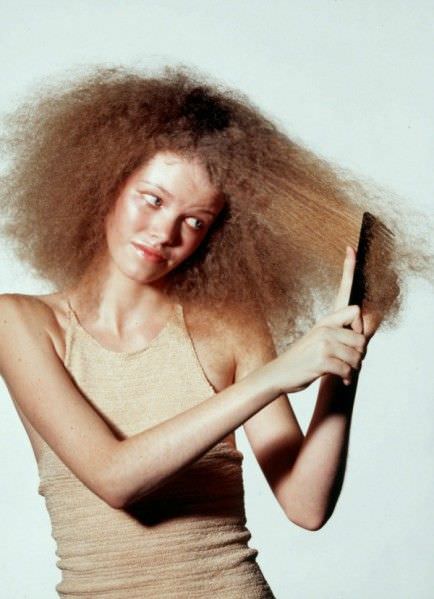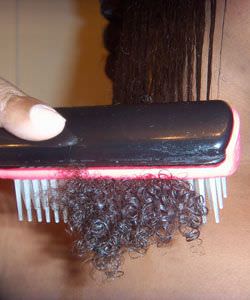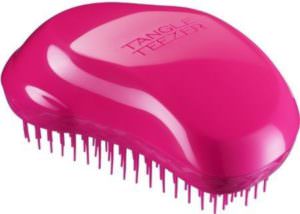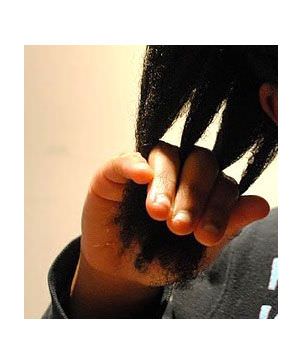 Detangling. Ugh, did you cringe when you read that word? If so, it means that you still haven’t found the proper way to detangle your natural hair. Learning how to detangle natural hair can seem hard, especially at the beginning of a hair journey.
Detangling. Ugh, did you cringe when you read that word? If so, it means that you still haven’t found the proper way to detangle your natural hair. Learning how to detangle natural hair can seem hard, especially at the beginning of a hair journey.
Below are three different ways to detangle natural hair. If you’ve been using one method so far and it still isn’t working for you, maybe try another method. What’s your favorite tool for detangling your natural hair?
 Denman brushes* (or paddle brushes) are a very common detangling tool. They have long plastic bristles and sometimes have balls on the tips.
Denman brushes* (or paddle brushes) are a very common detangling tool. They have long plastic bristles and sometimes have balls on the tips.
Denman brushes* make it easier to detangle hair in larger sections, although they can lead to excess breakage if not used gently. When using a denman brush*, work from the bottom up and grab your hair to avoid unnecessary tension.
Tangle Teaser/Tangle Fix

The Tangle Teaser/ Tangle Fix is a variation of a Denman brush. They’re normally smaller in size, with shorter and thinner bristles. The bristles in a Tangle Fix are also more flexible than those on a Denman brush. They’re supposed to make it easier to detangle hair and smooth out tangles.
Tangle Teasers do make it easier to detangle hair than a Denman brush, however there isn’t much of a difference in the amount of breakage. It’s important to be careful not to tug too hard with these tools, because they can rip out our natural hair if handled too roughly. Work in smaller sections with a Tangle Teaser or Tangle Fix to prevent pulling or snagging.
Finger Detangling

Finger detangling is personally my favorite method of detangling natural hair, although it can take some getting used to. Finger detangling causes the least amount of breakage out of all three detangling methods. Oils* work well to help ease out knots and tangles in our hair. As you learn what product works best for you and you find a little patience, you will find that finger detangling gets easier.
Detangling our hair is a necessary evil and we have to do it. Everyone is different though, and has different detangling tools. Once you find what works for your hair, practice it until it becomes easy. Afterwards, detangling won’t be as much of a chore as it once was.
Just be careful with that tangle teezer. Too many have reported mid shafts splits. It’s good as the beginning and then several months later they notice the damage
The same with the Denman….even when it’s “modified”. A significant amount of people have complained of damaged, frayed, and/or split ends (myself included) and are getting rid of the Denman, tangle teezer, and their knock-off versions.
Is that the detangler brush the I saw at Walgreen Pharmacy?
The denman damaged my hair and finger detangling is not enough for my thick hair. I use a good old wide tooth conair detangling comb! #NoBreakage #DontBelieveTheHype #Winning
A wide tooth comb right after finger detangling, a conditioner with great slip… or even coconut oil…. all of these are suggested on wet/ damp hair….
No mention of combs whatsoever…?
Depending upon the condition of my hair, I first use my fingers to remove major snarls, then lightly comb through with my Magic Star Jumbo Rake, then smooth and remove shed hair with my Denman D41 (the “free-flowing” style, which I greatly prefer to the narrower style we see modified on the hair blogs). My hair is butter by the last step.